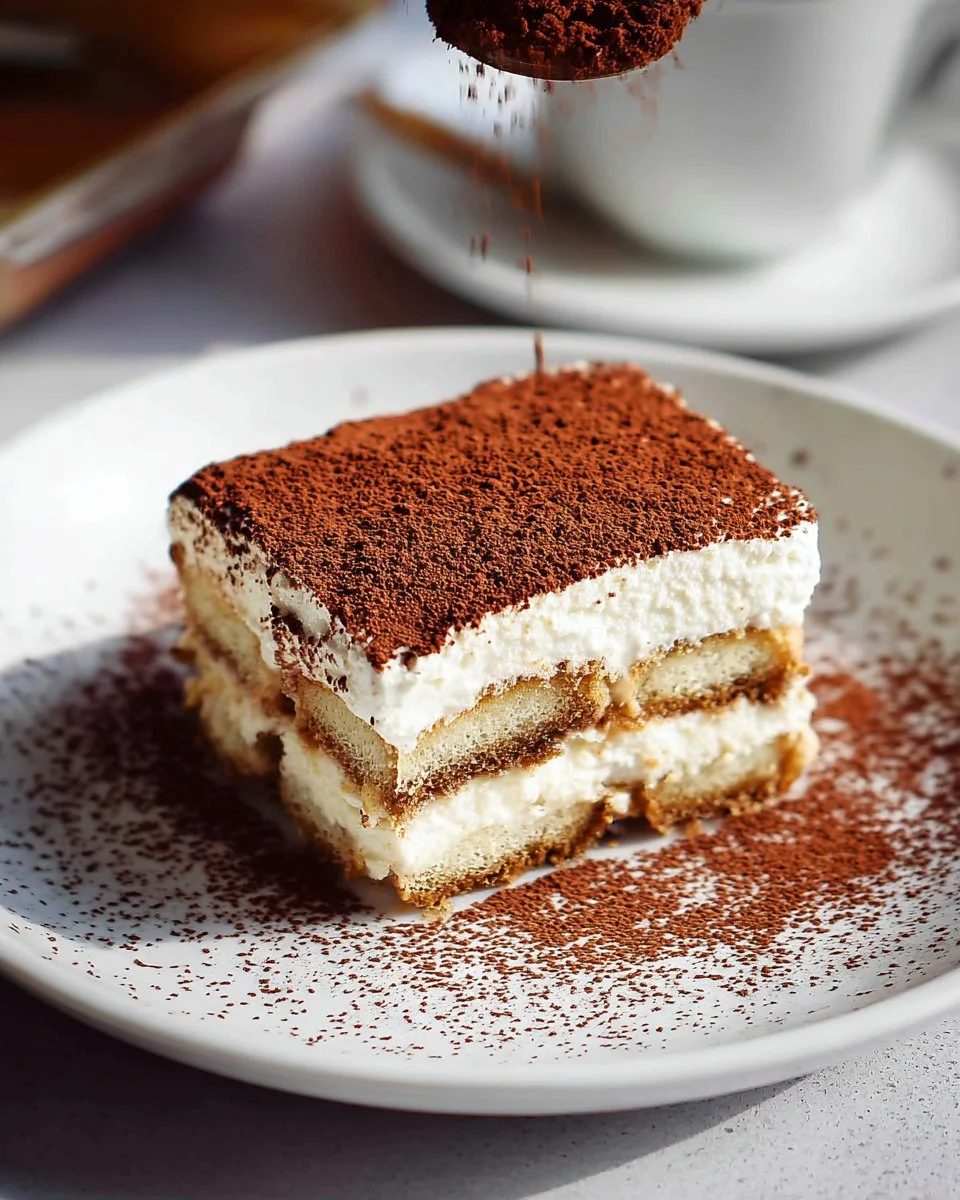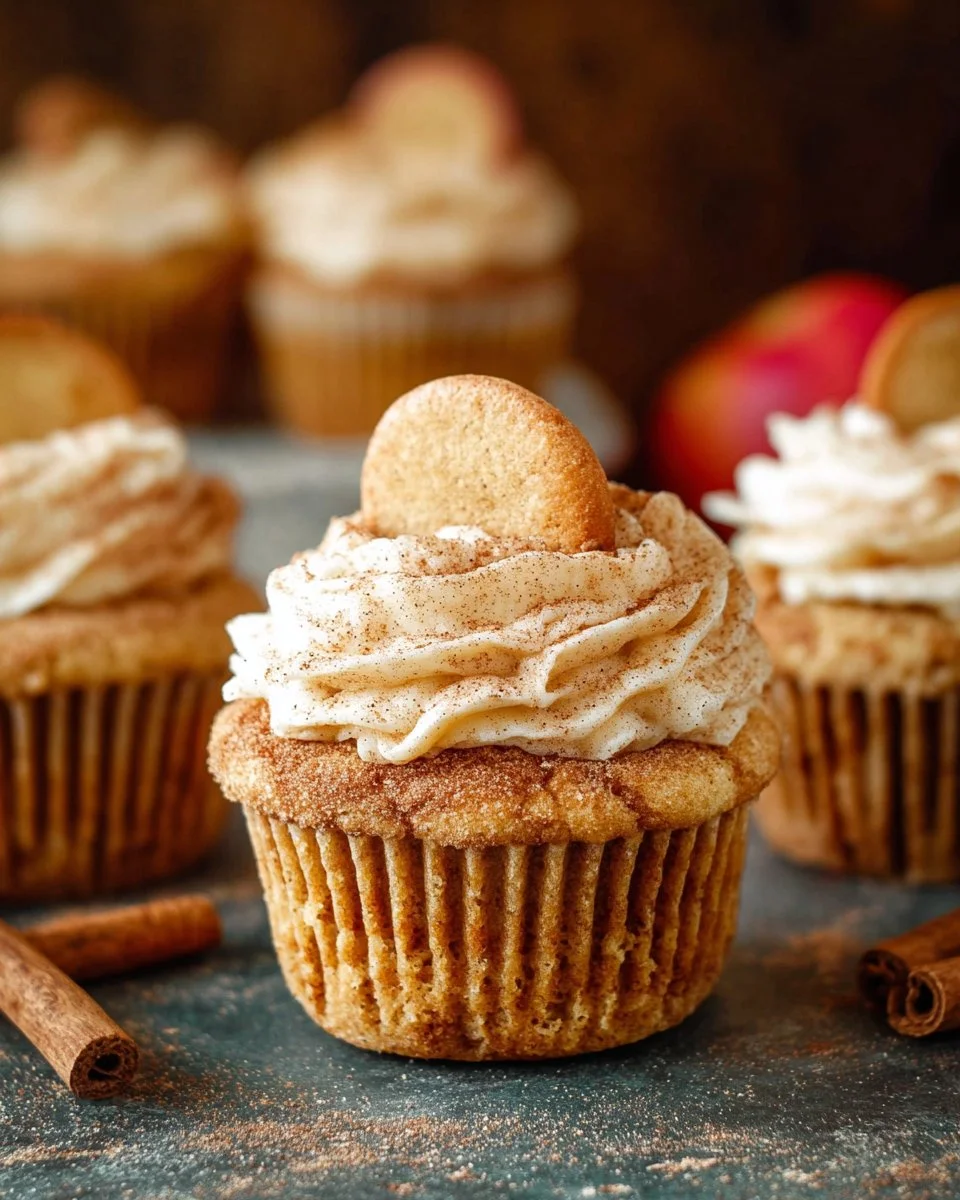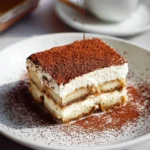Starting to bake can seem scary, but the smell of fresh white bread is tempting. Have you ever wanted to take a warm, golden loaf out of your oven? This easy white bread recipe is for you, the beginner. With just six basic ingredients, you can make a tasty homemade bread that will make your family happy.
The magic of baking with yeast is in its simplicity. It’s the journey of turning simple ingredients into something amazing.
Homemade bread is more than just a meal; it’s a journey of joy and pride. You don’t need fancy tools or skills to start. All you need is the courage to try. Let’s start this fun journey together, making a classic white bread to share with your family. For more ideas, check out this easy loaf of bread recipe to get you going!
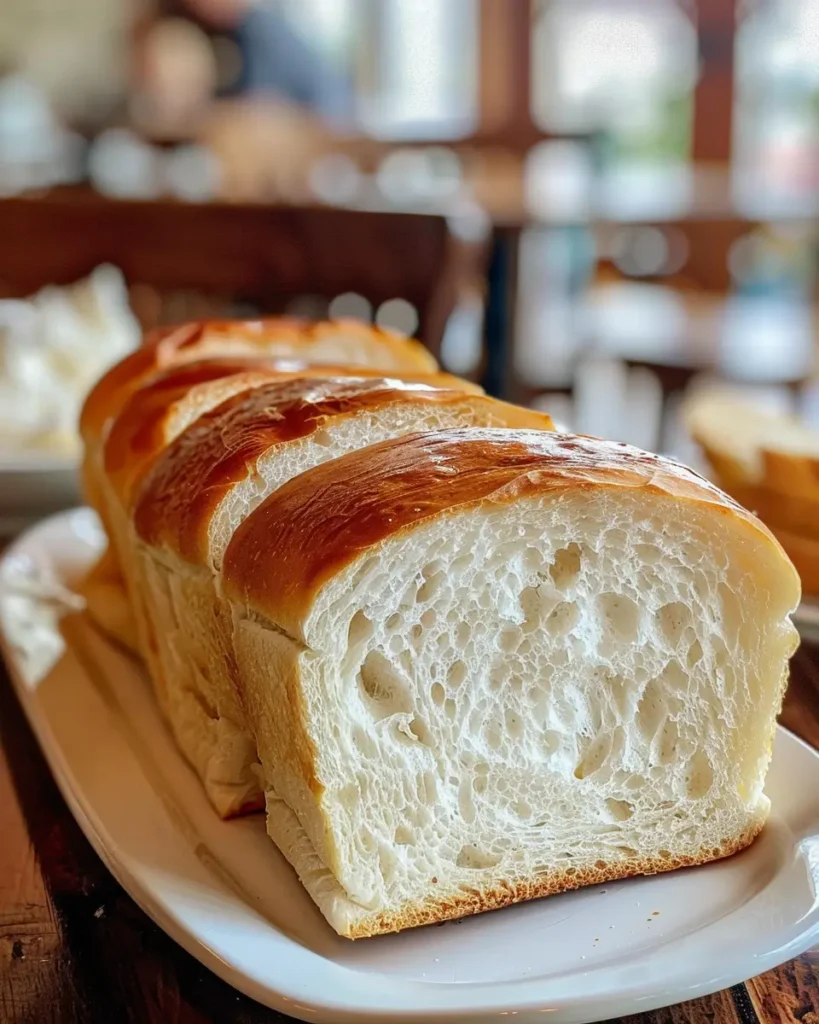
Key Takeaways
- This guide is perfect for beginners with a simple approach to homemade bread.
- Only six common ingredients are needed to create your own white bread.
- No special equipment required—just essential kitchen tools.
- Baking with yeast recipes can be simple and rewarding.
- Making bread at home can foster creativity and family bonding.
Introduction to Homemade Bread Baking
Baking homemade bread healthy simple is a fun journey for kitchen newbies. You’ll feel proud making something from scratch. The smell of fresh bread turns your home into a cozy spot, making baking a special backyard baking experience.
This hobby boosts your cooking skills and helps you relax. With a simple easy bread recipe, you can try different flavors and methods. It’s a cost-effective way to enjoy quality ingredients and improve your baking.
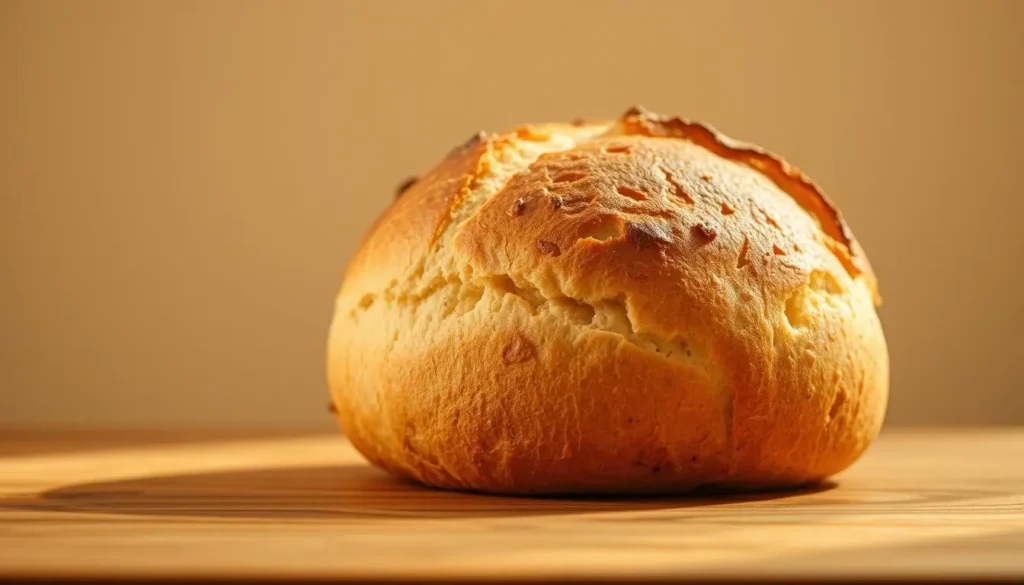
Baking bread at home is great for impressing others or as a hobby. Each loaf helps you appreciate baking more. It brings joy and warmth to your daily life.
Benefits of Making White Bread at Home
Making white bread at home has many benefits. You get to choose what goes into it. This means you can avoid preservatives and additives found in store-bought bread.
Homemade bread tastes and feels better than store-bought. The smell of baking bread makes your kitchen cozy. It makes cooking more enjoyable.
Baking at home is also cheaper. You can make more bread for less money than buying it. This saves you money and makes homemade bread a smart choice.
Essential Ingredients for Effortless White Bread
Making a tasty white bread recipe starts with knowing the key ingredients. Yeast and flour are key, affecting the bread’s texture and taste.
Understanding the Role of Yeast
Yeast is the magic in baking. It eats the dough’s sugars, making carbon dioxide. This makes the dough rise. Use fresh yeast for the best results.
Choosing the Right Flour: All-Purpose vs. Bread Flour
Flour choice is vital for white bread. All-purpose flour is easy to use but bread flour makes it chewier. Bread flour’s high protein helps the dough rise better.
With warm water, sugar, oil, and salt, you get a delicious, tender loaf.
Trying different flours can be fun. For a simple yet tasty experience, try this easy recipe.
Step-by-Step Process for Baking Delicious White Bread
Baking white bread is easier than you think. Just follow a few simple steps to make a warm, tasty loaf. Start by proofing the yeast, then knead the dough well.
Proofing the Yeast: The First Step to Success
Begin by mixing warm water, sugar, and yeast in a bowl. Let it sit for 5-10 minutes. You’ll see bubbles, which means the yeast is active and ready.
This step is key for a great rise. Make sure the water isn’t too hot. Water over 120°F can harm the yeast.
Kneading the Dough: Key Techniques for Beginners
Once the yeast is ready, mix it with flour and salt. Stir until a dough forms. Then, knead the dough on a floured surface.
Push the dough away with your heel, then fold it back. Do this for 8-10 minutes. You want the dough to be elastic and slightly sticky.
| Ingredients | Measurement |
|---|---|
| Warm Water | 1 ½ cups |
| Active Dry Yeast | 2 ¼ teaspoons |
| Sugar | 1 tablespoon |
| Salt | 1 teaspoon |
| All-Purpose Flour | 4 cups (approximately) |
Now that your dough is kneaded, you’re ready for the next steps. Follow this easy recipe, and your kitchen will soon smell amazing.
How to Achieve the Perfect Rise in Your White Bread
Getting your homemade white bread to rise well is key for a light, fluffy texture. It all comes down to understanding how temperature and timing work. Warmer places help the dough ferment faster, leading to a better rise.
Keeping the dough covered while it rests helps keep it warm. This stops it from cooling down too fast.
Timing is also very important in bread rising. Letting your dough rise slowly can make the bread taste better and feel softer. Here are some easy tips to help you make better homemade bread:
- Make sure your yeast is fresh and works well.
- Put the dough in a warm spot in your kitchen, away from drafts.
- Watch the dough closely; it should grow to double its size in about one to two hours.
- Try letting it rise for longer if you can; it can make the flavor richer.
By paying attention to these details, you’ll have a better chance at getting your white bread to rise perfectly. This will make a delicious loaf that your family will love.
Baking Your White Bread: Tips for the Best Texture
For perfect homemade white bread, focus on a few key things. First, preheat your oven to 350°F. This helps your bread rise well and get that golden crust you love. Also, bake your bread for 30 to 33 minutes, until it’s nicely browned on top.
To see if your bread is done, tap the top gently. If it sounds hollow, it’s ready. This trick helps make your bread light and fluffy. For more tips, check out Cloudy Kitchen.
With time, you’ll get better at baking for texture. Try new things and see what works for you. For tips on dough and recipes, Epic Meal Recipes is a great resource.
Storing and Freezing Your Homemade White Bread
To enjoy your homemade white bread for longer, proper storage is key. Store your bread in an airtight container or plastic bag. This keeps it soft and fresh for 2-3 days at room temperature.
For longer storage, consider freezing your bread. Freezing helps you enjoy your bread for weeks. Just slice it before freezing. Wrap each slice in plastic wrap and then foil to prevent freezer burn.
You can also freeze your dough before baking. This way, you can have fresh bread whenever you want. Let the dough rise, shape it, and then freeze. Thaw it at room temperature for a few hours before baking.
| Storage Method | Duration | Best For |
|---|---|---|
| Airtight container | 2-3 days | Keeping bread fresh at room temperature |
| Refrigeration | Up to 5 days | Short-term storage |
| Freezing baked bread | Up to 3 months | Long-term preservation |
| Freezing dough | Up to 3 months | Making fresh bread anytime |
Variations to Try: Getting Creative with White Bread
Baking white bread is a great way to get creative. Once you learn how to make a simple loaf, you can try new flavors and textures. Start with creative white bread variations to add excitement to your baking.
Here are some ideas to get you started:
- Cinnamon Swirl Bread: Mix cinnamon and sugar into the dough for a sweet, fragrant bread perfect for breakfast or snacks.
- Fruit-Infused Loaves: Add dried fruits like raisins, cranberries, or apricots for a sweet and textured loaf.
- Herb-Infused Bread: Use fresh herbs like rosemary or thyme for a savory twist.
- Nutty Bread: Mix in nuts like walnuts or almonds for added nutrition and flavor.
Try different shapes to make your bread more appealing. Braiding or shaping into rolls can make your bread stand out. Each new bread you make is a chance to impress your family with homemade goodness.
Don’t be afraid to experiment with different flavors and ingredients. Every loaf is a chance to create something unique and special.
| Variation | Main Ingredient | Flavor Profile |
|---|---|---|
| Cinnamon Swirl | Cinnamon and Sugar | Sweet and Spicy |
| Fruit-Infused | Dried Fruits | Sweet and Chewy |
| Herb-Infused | Fresh Herbs | Savory and Aromatic |
| Nutty Bread | Mixed Nuts | Crispy and Nutty |
Conclusion
Making bread at home is rewarding and fun, starting with your first loaf of white bread. This guide gives you the tools and knowledge to bake with confidence. Remember, practice makes perfect, and each try brings you closer to mastering bread making.
The joy of homemade bread is in the delicious taste and the memories made. As you start your baking journey, share your stories and experiences. For more on the nutrition of your homemade bread, check out this piece on white bread nutrition.
Your bread-making adventure is just starting. Start by gathering your ingredients and enjoying the aromas in your home. Soon, you’ll share not just bread but warm moments and cherished experiences from your kitchen.
FAQ
What is the basic recipe for homemade white bread?
Making homemade white bread is easy. You need all-purpose flour, warm water, sugar, yeast, salt, and oil. This simple recipe makes a delicious loaf.
Can beginners really make white bread at home?
Yes, beginners can make white bread at home. This recipe is easy to follow. You don’t need special equipment or baking experience.
Why should I choose homemade bread over store-bought?
Homemade bread is healthier and tastes better. You control the ingredients, avoiding preservatives. It’s more flavorful than store-bought bread.
How important is the yeast in bread-making?
Yeast is key for rising dough. Fresh yeast ensures the right texture and flavor. Always check the expiration date.
What temperature should my oven be for baking white bread?
Preheat your oven to 350°F for baking white bread. This temperature gives a golden crust and a fluffy inside.
How can I ensure my bread rises properly?
For a perfect rise, keep your dough warm and covered. A damp cloth helps create a cozy fermentation environment.
What’s the best way to store homemade white bread?
Store your bread in an airtight container at room temperature for 2-3 days. Freeze it for longer storage, wrapped well to prevent freezer burn.
Can I customize my white bread recipe?
Yes, you can! Add cinnamon, whole grains, or fruits like raisins. The options are endless for making it your own.
What should I do if my dough isn’t rising?
If your dough isn’t rising, check the water temperature. It should be warm, not hot. Also, make sure your yeast is fresh and active.
How do I know when my bread is done baking?
Your bread is done when it sounds hollow when tapped. It should also be golden brown on top. The internal temperature should be 190°F to 200°F.
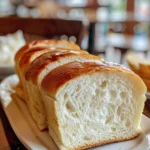
Homemade White Bread
Ingredients
Dough Ingredients
- 1 ½ cups Warm Water Ensure the water is warm but not too hot to avoid killing the yeast.
- 2 ¼ teaspoons Active Dry Yeast Use fresh yeast for best results.
- 1 tablespoon Sugar Helps in proofing the yeast.
- 1 teaspoon Salt Enhances the flavor of the bread.
- 4 cups All-Purpose Flour Approximately; you may need a little more for kneading.
- 1 tablespoon Vegetable Oil To enhance the softness of the bread.
Instructions
Proofing the Yeast
- In a bowl, mix warm water, sugar, and yeast. Let it sit for 5-10 minutes until bubbles form.
Making the Dough
- Once the yeast is active, mix it with flour, salt, and oil. Stir until a dough forms.
- Knead the dough on a floured surface for 8-10 minutes until elastic and slightly sticky.
First Rise
- Place the kneaded dough in a warm area covered with a damp cloth. Let it rise until double in size, around 1-2 hours.
Baking the Bread
- Preheat your oven to 350°F (175°C).
- Shape the dough into a loaf and place it in a greased loaf pan.
- Bake for 30-33 minutes until golden brown. Tap the top; it should sound hollow.
